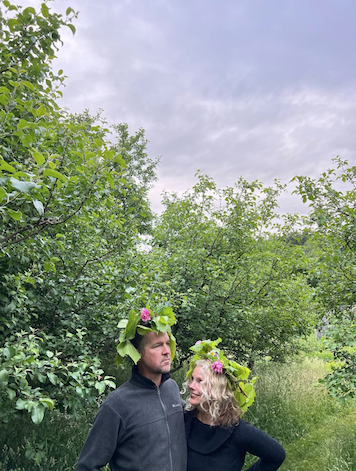
The project known as La Garagista Farm & Winery began in 2010 on a mountain in Vermont. In essence, Deirdre and Caleb farm three parcels of co-planted, alpine varietals that are horticultural crosses of vinifera and native riparia and labrusca vines. The family trees of these varietals are quite baroque and uniquely American.
They practice biodynamics and also pull from diverse organic and permaculture concepts. Primarily, there is the home farm and vineyard in the Chateauguay, a protected forest in Barnard, Vermont (480 m above seal level) where they also grow vegetables and fruit and raise some livestock. The farm is a polycultural project with vegetables, orchards, flower gardens, vines, and chickens all interplanted. The chickens are particularly interplanted. They also raise pigs on farm, utilizing them to naturally till new ground and to be the source of their farm-cured charcuterie. In the vineyard, they plant vegetables between the vines focusing on root vegetables, escaroles and chicories, and flowers, all of which enrich the vitality of the soils in this parcel.
The story has been quite the success
The other parcels are in the Champlain Valley (184/194 feet) and are close to Lake Champlain. No-till and natural field cover crops are part of the farming at these two vineyards, encouraging the flora and fauna particular to each microclimate.
The story has been quite the success and Deirdre, Caleb and their wines have been written about in many august publications including the New York Times. Deirdre & Caleb’s family has grown: they have been assisted in their endeavours by several young students, mentored them and encouraged them to start up their own projects.
We ordered the following wines in April 2021. To catalogue the tortuous route they took in order to finally arrive in the UK in August 2022 would be a waste of everyone’s time! Gentle reader, we despaired. Suffice to say, the plot (and the wine) was lost. All good things come to those who wait, however.
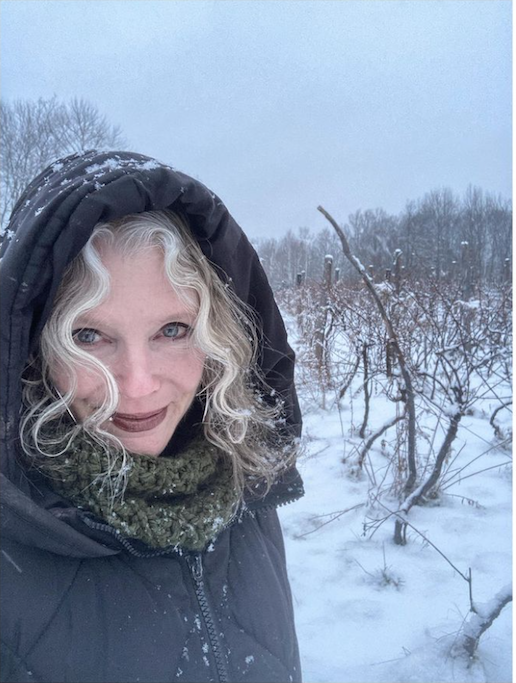
So, we have a very little of a lot of cuvées! All are made from the hybrids one finds in the extreme climate of Vermont. All have distinctive personalities and now, having begun to put down roots in different places, the wines are showing the character of their respective terroirs. It is also important to remember that this is cider country and Deirdre & Caleb use the wide variety of apples that grow in Chateauguay and blend them into a cider wine style, called Vin ëd Pomme.
To catalogue the tortuous route they took in order to finally arrive in the UK in August 2022 would be a waste of everyone’s time. Gentle reader, we despaired.
The vineyards are farmed to their own needs, but basically no-till, and biodynamically, with a focus on natural field cover and soil development. They use typical biodynamic preps of horn manure, silica, horsetail, stinging nettle, kaolin clay, and small amounts of minerals copper and sulphur due to intense humidity. They also experiment with plant medicines provided by the vineyard floor when needed.
Deirdre and Caleb’s approach shows the value of biodynamics when it is practised with intuitive understanding. They have a sense of the vineyard as a whole, and a sense of the vines in particular. With their busy schedules and given the distances they need to travel, the vineyards need to have healthy eco-systems and build up resistance to disease, and their canny adaptation of the biodynamic remedies helps them to achieve this objective. At present, the vines give pitifully small yields, but the quality is sublime. When you taste the wines from say, La Crescent and Frontenac Gris, you may start to question the traditional hierarchy of noble grapes. For isn’t quality really the result of responsive farming and interesting terroir?
At present, the vines give pitifully small yields, but the quality is sublime.
The wines:
2020 Ci Confonde white
We start with a refreshing pet nat, however. 2020 Ci Confonde white comes from the delightfully-named Les Carouges vineyard (the red-winged blackbirds) in Vergennes, a broad western-facing slope looking toward the Adirondacks, a place defined by wind and big weather gestures on clay and calcareous, over lacustrine silt sediment (historically this land used to be sea bed).
The grape here is Brianna, a hybrid named after the horticulturist’s daughter. Whole clusters are given a two-day maceration, then crushed by foot and fermented in flex tanks and glass demijohns, before being bottled with the latent sugars. The fermentation continues naturally as per Pet Nat without additions. Ci Confonde is finished with a light hand disgorgement off heavy lees and bottled without further filtration or added sulphur. This wine reminds us of pears and clover honey – the bubbles make it delicious and refreshing too.
2020 Grace & Favour Pet Nat
This comes from vineyards on Lake Champlain and is a beautiful expression of the La Crescent grape. Clay limestone favouring limestone. The wine undergoes whole cluster maceration for two days, is then destemmed, foot crushed and pressed. Riddled during the winter, it is then disgorged before topped up with the same wine.
The name Grace & Favour is inspired by Hampton Court. (La Crescent is descendent from Muscat d’Ambourg, also known as Black Hambourg”. Deirdre writes: “The Great Vine at Hampton Court is Black Hambourg. “Caleb and I made a pilgrimage to pay our respects to the Vine and whilst there read some of the history of Hampton Court. After Richelieu took over the palace from Henry the 8th, the apartments in the palace were given to ladies in waiting and chevaliers in “grace and favour”. We thought this was a perfect nod to La Crescent’s parentage”.
The wine has a beautiful golden yellow colour and enchanting aromas of pollen, clover, red apples and grapes with naturally mouth-cleansing acidity. There is something enchanting about Muscat-style wines when they are elevated by a disarming mixture of acidity and bitterness. The balance in this wine is terrific, the alpine meadow aromas bring a smile to your lips and the wine fills the mouth with crunchy bubbles – for want of a better expression.
2019 Native Love Homefarm
Thails from Les Bonnes Femmes and Les Forestieres vineyards, a light red-hued co-fermented field blend of six different grapes, three red and three white, from the home farm vineyards in the mountains. Marquette, Frontenac Noir & St. Croix are in the red brigade and La Crescent, Frontenac Blanc and Frontenac Gris provide the white ballast. This wine is fermented in flex tank and demijohn and aged in the latter for three months. No sulphur is added. With its gemlike colour and silky brightness, this juicy number has juicy blackberry and bramble fruit and a touch of stemmy/herbiness.
2019 Fleurine
This is a new cider/wine for us, one of La Garagista’s quirky aforementioned vin ed pommes. The orchard is located in the home farm in the Châteauguay, Barnard at an elevation of 487 m above sea level, and the soils are volcanic comprising clay, schist, granite, gneiss, amphibolites, quartzite and garnet. 29 different heirloom and wild apple varieties including Liberty, Cox’s Orange Pippin, Old Pearmain & Orleans make their appearance here. The vineyard, where the Frontenac Gris portion of the blend is grown, is located on the clay and limestone in Vergennes, Champlain Valley. The wine ferments in flex tank and glass demijohn. The Fleurine may be described as being made according to the ancestral method with the fermentation in bottle seeded with late winter cider. The apples to make the cider are picked in November and December, then left to sit outside to freeze and thaw during January and February. The fruit is then ground, and fermented on pomace for one month before pressing.
The split is about 50/50 between grapes and apples.
2019 The Flesh & The Bone
This is similar to above in terms of method. The grapes come from Les Carouges in the Champlain Valley, whist the apples are from the orchard at Domaine de la Forêt. The Vergennes soils are clay and calcareous, composed of lacustrine sediment and sandy schist and gneiss bedrock and greenstone, whereas the home farm features volcanic soils composed of clay, schist, granite, gneiss, amphibolites, quartzite and garnet. Brianna (50% of the blend) is the grape variety and the remainder comprises 29 heirloom and wild apple varieties.
A still base wine made with the Brianna grape is seeded with fresh cider from the same vintage around the time of the third full moon in the New Year much like old-fashioned Prosecco. The apples are picked throughout the autumn and up into December and subsequently cured in burlap sacks in the barn, being allowed to freeze and thaw with the fluctuating temperatures. In January, the apples are brought in, allowed to thaw, then ground and macerated for one month, and finally pressed. The 50% of already-fermented Brianna wine is blended in to the cider and then bottled for finishing with fermentation in bottle.
2019 Damejeanne Red
From the Marquette variety, all the fruit begins fermentation whole cluster for two days and is subsequently destemmed and foot-crushed. Spontaneous fermentation takes place on skins and open vats for two and half weeks and the wine remains on the grape skins for five weeks in total.. The wine is then matured in glass demijohns of 25 litre capacity where they do a natural malolactic in the spring. They use glass demijohns because glass is a neutral material and they feel the wine is influenced more by shape than material. The wine is pale with rasping sour-cherry freshness of a youthful Barbera or a Freisa perhaps. The liquid is ebulliently purple, youthful and impertinent, a joyous surprise.
2018 Vinu Jancu Reserve
This comes from I Selvatici, {the wild ones} West Addison, Champlain. Soils are clay and calcareous (historically this land used to be sea and lake bed) and the grape here is La Crescent. The vineyard is defined by the explosion of wild flora that grows beneath the vines, golden rod, purple aster, daisy fleabane, and wild mint. The wine has changed somewhat, and is now a skin-fermented, more oxidative style. The grapes are hand-destemmed, foot crushed and ferment in flextank, demijohn and amphora on skins for five weeks. The wine is aged in an amphora made from local Champlain Sea clays, the same clays in which the vines are rooted. No sulphur is added and the wine undergoes two years of ageing before release. Hazy golden-orange, musky and wonderfully aromatic with notes of wild mint, tarragon, white strawberry, little golden plums and pears, skinsy and grippy with some back oxidative notes, and oh-so-alive. Wildly wonderful.
2018 Loups Garoux
The West Addison Vineyard, with its high proportion of grey, brown and yellow clays on limestone, adjacent to Lake Champlain, is also where the 2018 Loups Garoux comes from. This is an intimate natural clos with trees lining three sides of the vineyard and Lake Champlain providing the other border. It is flat and receives the full sun.
“Loups~Garoux is the French name for mythical wolf creatures that are not cursed, but blessed. One is born a Loup~Garou and can turn at will. They are stately, dark wolves to behold and remind us of other mythical creatures like those in the legends of the Black Wolves of the Chateauguay, the wild alpine terrain that defines our homefarm and vineyard landscape.”
This wine is a homage to Amarone and other ripasso-style wines. The grape is Frontenac Noir and the wine is made in a very particular way. Half the grapes picked early and half left on the vines to shrivel (ripasso). After overnight whole cluster maceration, the grapes are destemmed and foot-crushed and both elements are fermented together in barrels and aged in same for a further two years. Dried and fresh fruits dovetail together to knit a fabric of deep flavours and bright acidity.
And now for something new (but also quite old)
Let Deirdre describe the rationale behind the project to make rancio-style wines.
When Camila Carrillo joined us in 2018 I asked her what kind of wine she was interested in and interested in making: Sherry was her answer. I had several demijohns of things that either had developed flor or had different profiles to the wines we were currently making, so I set them aside to see what would happen. I thought they might be good candidates for an oxidative project we could pursue together. We tasted through and decided to put some toward rancio aging, others toward flor-ageing. Currently, we have three wines in this family, plus two more that are in progress. In 2021, we received several 50 and 100 year old Amontillado barrels from Cota 45 {!} and since then we have deployed them in our joint project and Camila is using also for her own oxidative wines.
They call this project “Lost Causes and Desperate Cases”.
Rancio white is made from La Crescent and Rancio Red is 100% Marquette.
The rancio white dates back to 2014. Every year since then, a portion of La Crescent is put toward this cuvee. In 2018, they began placing the La Crescent outdoors (in their rose garden) in glass demijohns, then bringing the jars indoors in late autumn to winter in the cellar. In total, the two rancio bottlings spend three summers outside in the sun. As Deirdre notes, it helps that there is flor in the vineyards.
Because they have to rack the wine once in the summer and once in the autumn, in order to bring them out of and into the winery (a complicated procedure because in the winter the demijohns are full and high on shelves in the winery, and because La Garagista is a tiny operation and has no forklift, they gravity-rack into demijohns that are only half full in order to move them to the garden and to encourage oxidation. They have to rack back up onto the shelves for winter. It thus gives them the opportunity to add in the newest vintage to the whole and have consistency between demijohns.) The Rancio sec is nutty, floral and with notes of baking spices, but also tastes of the sun and earth. And minerals galore.
The rancio red is primarily Marquette from 2017, an incredibly hot vintage that year with temperatures in the mid-30s! As a consequence, the Marquette had a degree of raisining that lent itself to a particular style of wine. Since then they have been adding a portion of the new vintage of Marquette to the whole in the same way they do for the rancio white. They are still developing the process for the red rancio. Now, a portion of the fruit is aside to partially raisin on the vine for this cuvee and the rancio spends the winter in the amontillado barrel.
As this project develops, they will have two flor-aged La Crescent soleras. One is done all in glass and the other in 100 year old Amontillado barrel. There will be two bottlings to illustrate pure Vermont biological ageing, and the other the Vermont-Jerez connection.
2020 Ci Confonde Pet Nat White
2020 Grace & Favour Pet Nat
2019 Native Love Homefarm
2019 Fleurine
2019 The Flesh & The Bone
2019 Damejeanne
2018 Vinu Jancu Reserve
2018 Loups Garoux
NV Rancio sec white ~ 37.5cl
NV Rancio sec red ~ 37.5cl
NV Found Love Solera ~ 37.5cl
*
Interested in finding more about the wines of La Garagista? Contact us directly:
shop@lescaves.co.uk | sales@lescaves.co.uk | 01483 538820


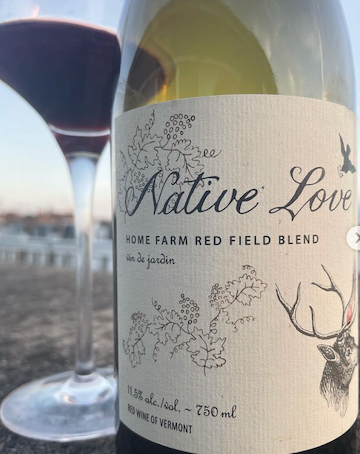
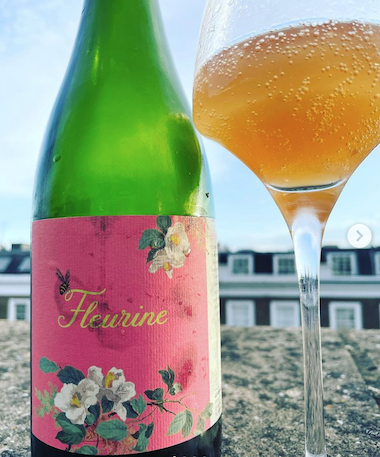
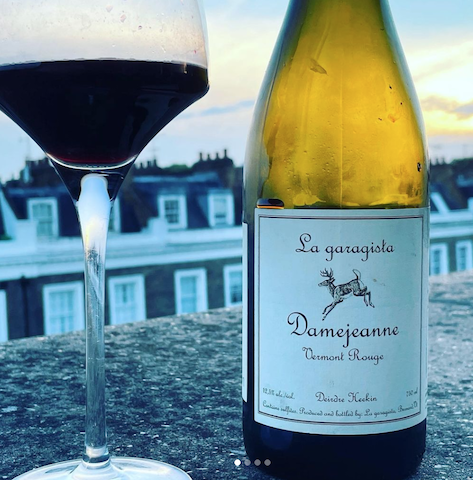
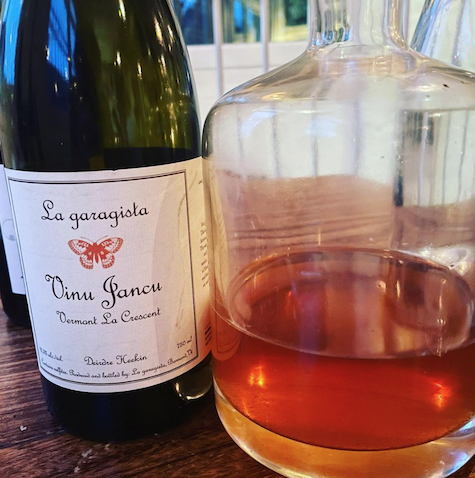
Pingback: The Alternative Perspective: A Question of Taste – Les Caves de Pyrene